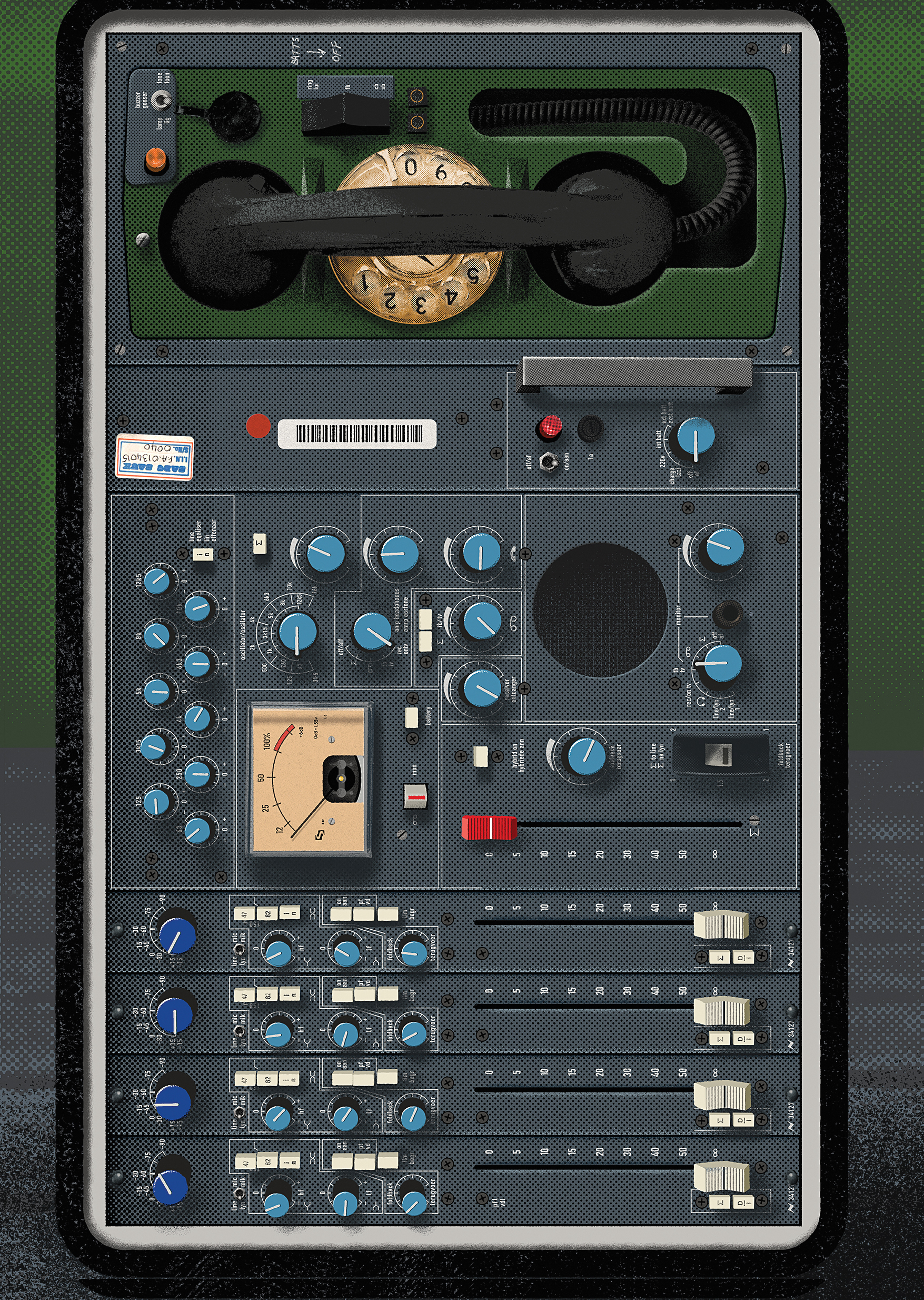After the internet came along and made sharing of information easier, I noticed an interesting trend. Maybe it's because of that misguided impulse of "doing it the right way" that beginners attempt to apply to the recording arts. Could it be that it's related to the "Do You Really Need to be 'Doing It Like a Pro'?" End Rant I wrote for issue #159? Is it some sort of lazy internet-propagated consensus that just built up over time? Whatever has caused it, I've steadily observed an adoption of techniques that many young recordists seem to regard as absolutes. As I've probably noted one thousand times in Tape Op, there are no rules that one must follow to make a great recording. Many albums and songs we love were made in all sorts of different ways with varying gear, as well as with a wide palette of sonic results. Variety is good. What is “bad” is to assume that if one is not applying some certain techniques, that their recordings will be inferior. So, with that in mind, here's a list of recording techniques I've noticed that many seem to have adopted as mandatory. I'm here to tell you to always make these sorts of techniques a decision, not a must-do. And, of course, in the spirit of this article, feel free to ignore any of these rules as you wish!
Mix Bus Processing
I cannot count the number of times someone has gasped when I told them I wasn't going to strap a compressor, limiter, or EQ on the left/right output of my console when mixing. I can, and I have done this at times. But most of the time my mixes don't need it, and it makes my recall process easier, so I don't use one. I don't believe I ever once saw anyone do this – or even heard about it – in the '80s or '90s when I was making records as an artist.
Parallel Drum Limiting
I'm not sure when I first learned this technique, and I definitely currently use it a lot, but I can attest to making thousands of mixes without it years ago. In fact, in many styles of music it can really mess up the dynamics by bringing the close mics too close to the listener. Use carefully!
Not Mic'ing the Hi-Hat
After watching an Instagram post by Greg Wells [Tape Op #123] simply asking for hi-hat microphone suggestions devolve into hundreds of "no mic" comments, I almost lost hope for humanity. When I teach people drum tracking, I always tell them that many times a hi-hat mic might be unnecessary. However, some sessions really do need a mic for capturing the subtly of a groove and hi-hat clarity in the right way. I've had drummers playing with brushes, light hitters, and even just certain patterns that demand a mic on the hi-hat. I won't usually put up a hi-hat mic if I don’t think I will need it at mixdown, but if someone else is going to be mixing I'll likely put one up just in case. It's okay to mic a hi-hat.
Inserts on Every Track
Maybe it's from growing up where I was mixing via consoles only, but there still are so many times I will finish a mix and realize that – outside of levels and panning – many of the tracks used have had nothing done to them. No plug-ins, sends, and/or hardware. Why? Because some tracks are just fine as they were recorded, and putting them in at the proper level and panning is all that’s needed. Parts such as backing vocals, certain keyboards, percussion, and even electric rhythm guitars often do fine with no processing. Focus on the important work instead!
Drum Room Mics
I don't know how many times I've begun a mix on some home recorded drum tracks, only to find that the "room mics" were only several feet away from the drum kit. Using room mics on a drum kit requires distance, and if no distance is to be had (tiny basement studio?) then be content with your overheads or in-front-of-the-kit mics.
DI'd Electric Guitars
There are techniques where direct recordings of electric guitars can offer up re-amping advantages, but this has to be done carefully and with a specific plan for later use. Inserting a DI box in-between your guitar and amplifier will cause a ground loop and audible hum most of the time. The quality of the DI needs to be carefully considered, as many 1/4-inch inputs on preamps and most lower cost DI boxes or interfaces honestly don't sound that great. There are people that are able to make this work for their productions, but if you're doing it because you heard you're "supposed to" then it's likely you shouldn’t be bothering.
Electric Bass Amp and DI
Yes, tracking both the DI bass and an amp can sometimes be the only way to get the blend of tones one might need. However, please listen and tell me these two tracks sound different enough from each other to even bother. Just like the guitars above, this can lead to ground loops and hum if not carefully set up. When blending the tracks, be aware that the amp signal comes through speakers and air, thus it is always "later" in time than the near-instantaneous recording of the DI and will need phase adjustment. I've mixed, produced, and played on thousands of songs with either just a DI or amp bass recording. You might not need both!
Reference Tracks
I have to admit that I've rarely found the idea of listening to other artists' finished recordings to be helpful in the studio. Sure, if someone wants to play a track and discuss a certain reverb sound or a cool production trick, I can get some ideas from that. But if I'm told to listen to some song and match my mix to it, I never hear enough similarities to have any idea of how to proceed. In fact, many times it seems to derail a perfectly good mix if I try to do this. I'm telling you this so you won't think you're an idiot when you feel the same way.
That Ubiquitous Vocal Mic
There's a certain dynamic mic out there, and it's a really great mic for a number of purposes. But somehow I swear that the internet has decided that it is the "best" mic for vocals. I've always thought that it had its place when I was recording shouty singers, live vocal takes with a band, voiceovers, and sometimes even on acoustic or electric guitars. I own two of them, but, in all honesty, I barely use them these days. Half of the time that I find myself mixing vocal tracks they were used on, I wish they'd tried some other mic, as I usually feel that it wasn't the best choice. When and why did the internet tell everyone that this was the only mic to buy? It seems all of a sudden that many other excellent (and sometimes more affordable) choices suddenly got overlooked.
Research how the records you like were made. Use your ears and, most importantly, carve your own path. 


